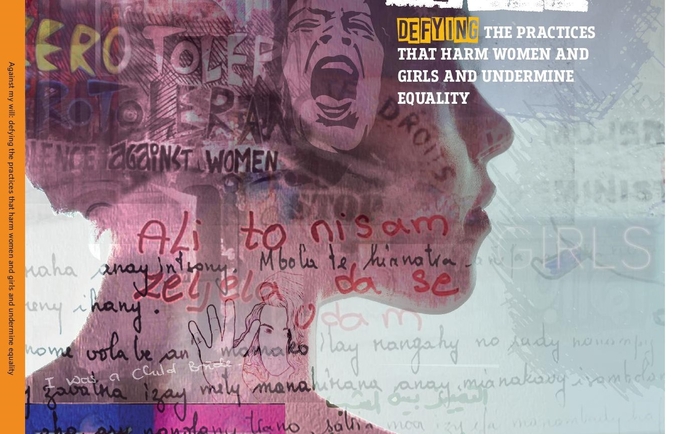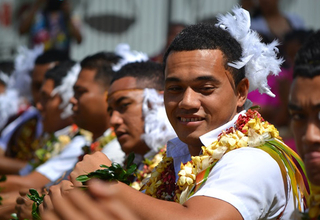The Pacific can become a global leader in ending child marriage
Editorial – Dr Jennifer Butler, Director of the United Nations Populations Fund Pacific Sub-Regional Office
Today, 33,000 girls under age 18 will be forced into marriages, usually to much older men.
Tomorrow, another 33,000 girls will follow them.
This month marks the Pacific-wide launch of the United Nations Populations Fund (UNFPA)’s State of the World’s Population report: ‘Against my will – defying the practices that harm women and girls and undermine equality’. The report analyses the context of three practices that continue around the world: gender-biased sex selection, female genital mutilation, and child marriage (also known as early marriage). Every year, millions of girls are subjected to these practices which harm them physically and emotionally, with the full knowledge and consent of their families, friends and communities. In recognition of the impact of harmful practices, national and regional commitments at the Nairobi Summit on ICPD25 affirmed zero gender-based violence and harmful practices against women and girls by 2030.
Despite a near-universal consensus against child marriage, globally 146 countries permit marriage of girls below the age of 18, in contravention of international human rights standards. In the Pacific, child marriage remains an area that warrants greater attention: in 11 countries, child marriage is permitted under national law.
The State of the World’s Population report documents the cascade of harm caused by child marriage and its impact on the health, wellbeing and prosperity of girls, communities, and entire countries.
The cascade of harm is simple: a girl who marries at a younger age is less likely to fulfil her potential because the initial act of early or forced marriage sets her entire life on a different trajectory. A girl who marries early is less likely to complete her education, and more likely to experience adolescent pregnancy, which can lead to heightened risk to maternal or newborn health, and contributes to a larger trend of rising adolescent birth rates (which is rising in at least 9 Pacific island countries). She is also more likely to become one of the almost 2 out of 3 women in the Pacific who experience gender-based violence (a prevalence rate that is double the global average), and more likely to become trapped in the cycle of poverty.
When girls marry, they are usually expected to assume the caregiving and domestic work in the home, which has negative financial repercussions for the family, community and the well-being of the nation. Even in cultures where the practice of bride price continues, the short-term financial windfall associated with this custom does not outweigh the longer-term financial harms. That is, girls who have access to education and economic opportunity are more likely to sustain formal employment thereby supporting their families and contributing to the well-being of a thriving nation.
The cascade of harm can also be felt at the national level. The World Bank found that in just 12 countries where child marriage is prevalent, the loss of human capital would come to $63 billion between 2017 and 2030, much more than these countries received in official development assistance. This strengthens the economic imperative upon countries to end this practice.
In 1994, at the International Conference on Population and Development (ICPD), world governments called for universal sexual and reproductive health and decisively demanded an end to harmful practices. One year later, at the Fourth World Conference on Women, governments again declared that harmful practices must stop, including early marriage. And, at the Nairobi Summit on ICPD25, held in Nairobi in November 2019, global, regional, national and local commitments were made to reach zero harmful practices by 2030.
Across the Pacific, UNFPA works closely with governments to achieve the three zeros: zero preventable maternal death, zero unmet need for family planning, and zero gender-based violence, including all harmful practices. Through the global Spotlight Initiative to End Violence Against Women, and the Australia-supported flagship programme, A Transformative Agenda for Women, Adolescents and Youth in the Pacific: Towards Zero Unmet Need for Family Planning, UNFPA have witnessed the incredible leadership from government to advance human rights and dignity of all people. Significant progress has been made, but there is more that we can do to fulfil the ICPD promise.
In these extraordinary times, we in the Pacific must be resolute in working to achieve this goal. We know that poverty, as a driver of child marriage, is set to increase as the social economic impact of COVID-19 starts to emerge simultaneous to the context of the climate crisis in the Pacific, which is already disproportionately impacting women and girls. With services and programmes shuttered due to COVID-19, experts estimate that within six months, an additional 13 million girls around the world may be forced into early marriage. This risk is just as pronounced in the Pacific. We simply cannot defer these conversations to another day – they are integral to building back better.
This year begins a “decade of action” to achieve the Sustainable Development Goals by 2030, including target 5.3: “Ending harmful practices.” Achieving this most fundamental expression of gender equality and equity means all girls everywhere in the Pacific are empowered to claim their rights to a childhood, to a future, where marriage, and becoming a mother is a choice – an adult choice.
Through our work with government, civil society, and communities UNFPA continues to value the capacity for inclusion, vision, and sustainability that is ubiquitous in the Pacific. In short, the Pacific can become a global leader in achieving zero harmful practices with the elimination of child marriage The evidence has arrived, the time to act is now, and we stand beside you in this invaluable work – every step of the way.



